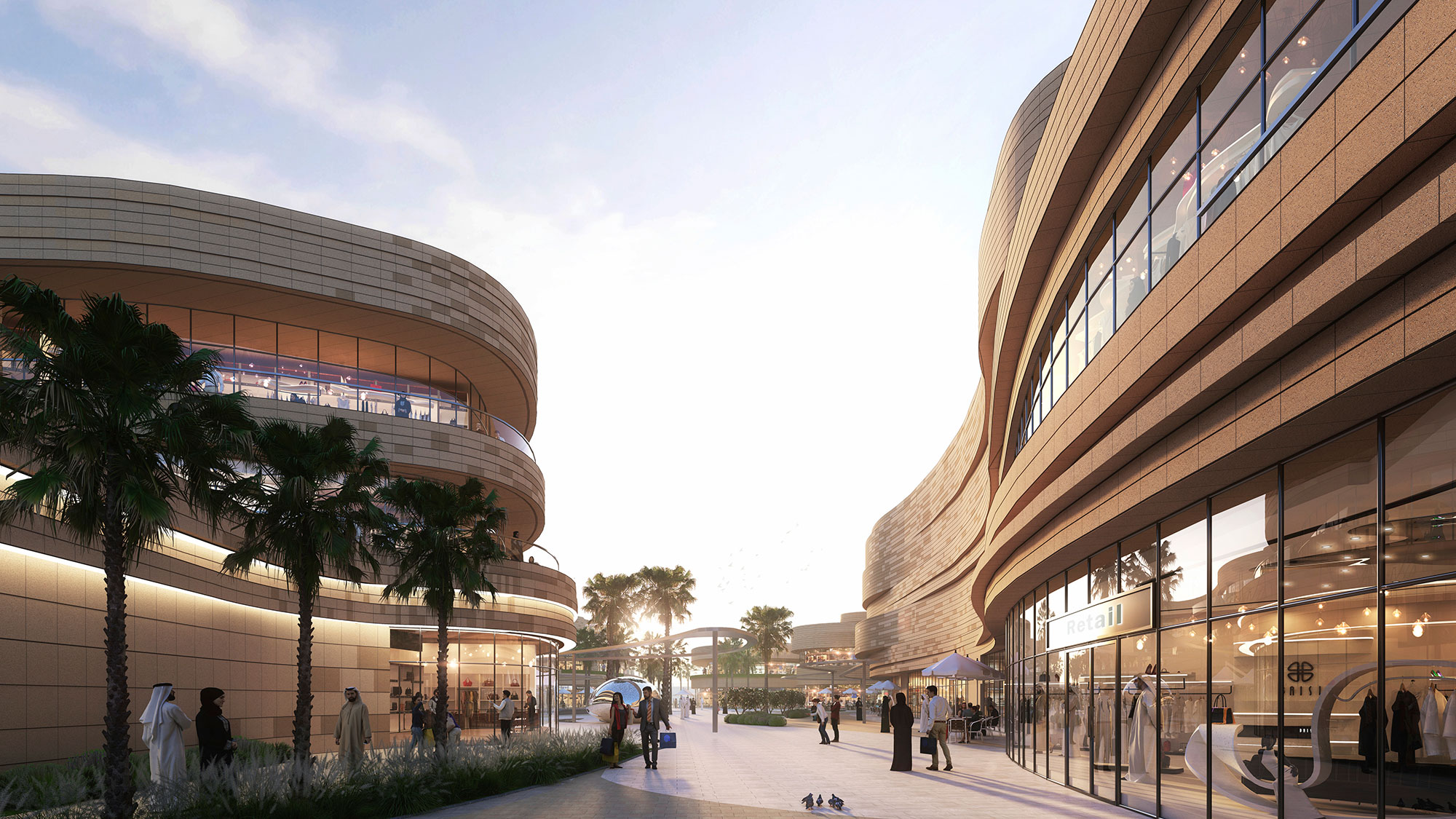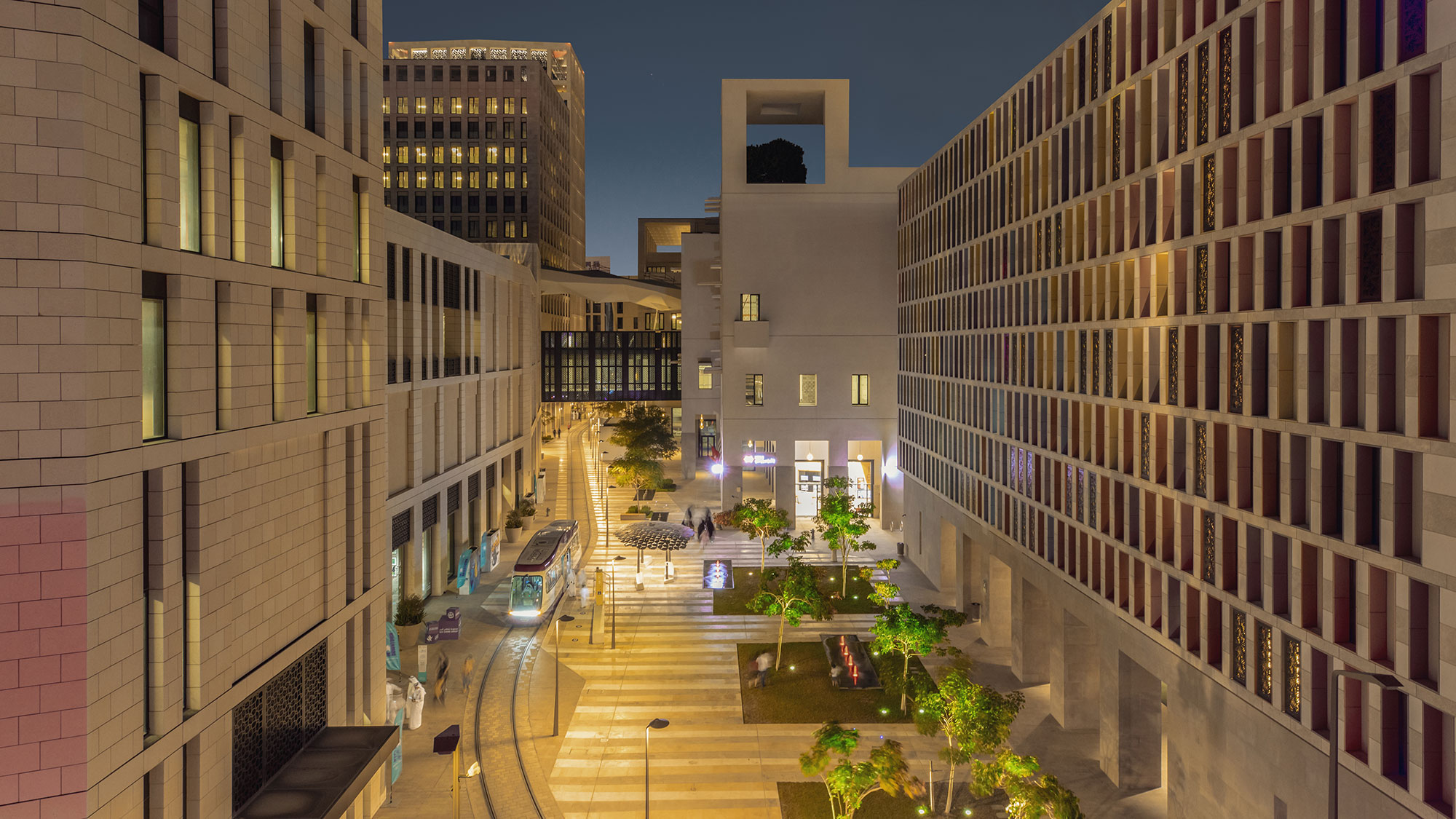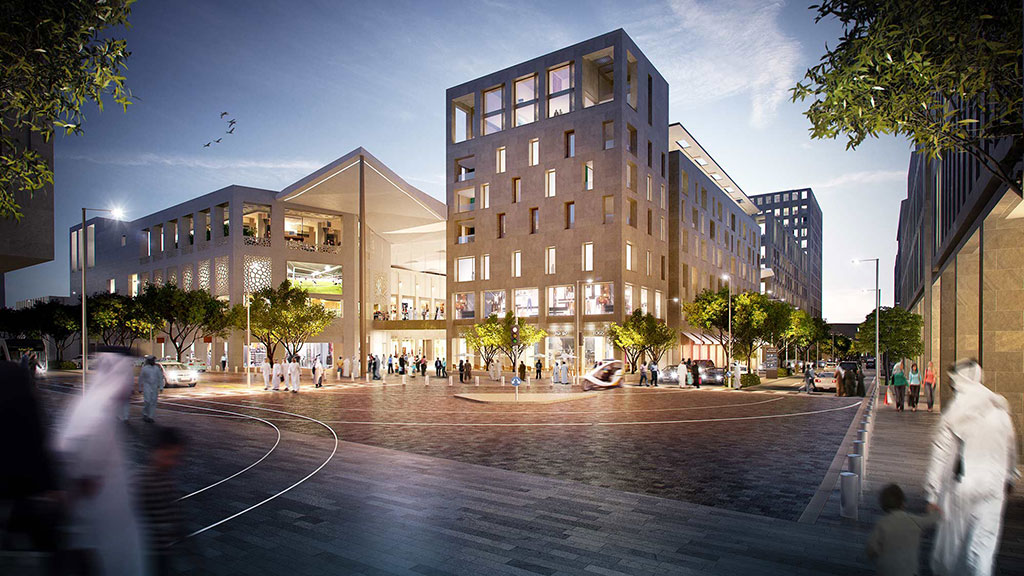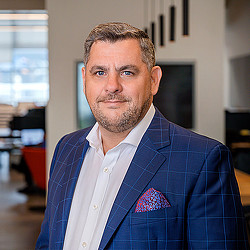Regional Revitalization: Designing for Impact in the Middle East
April 22, 2024 | By Tim Martin
Prior to speaking at the Fast Company Innovation by Design Summit in Doha, Tim Martin, Principal and Managing Director of Gensler Middle East, discusses how key design trends shaping the region can pave the way for regional revitalization.
It’s an incredibly exciting time to be working in the Middle East. The architectural services market is growing at a compound annual growth rate of 7.61% over the next five years, driven, in part, by increased investment in the region, the emergence of giga-projects, and a spike in demand for sustainability.
At the same time, there’s a mounting focus on human-centered design that considers local context by blending cultural appreciation with visionary design principles. From master planning designed for connection and collaboration to mixed-use venues that drive extraordinary and diverse guest experiences, how humans interact with spaces in the Middle East has never been more important.
Good design has the power to create a better world, be that through improving the human experience or creating a more sustainable future.
Inclusive design principles should be rooted in culture.
Whilst there has been a tendency in the Middle East for mixed-use developments to be within large, enclosed boxes, the last few years have seen successful examples of models that veer away from such a formula. The result is a shift towards implementing sustainability measures such as reducing the use of energy for cooling large volumes of atrium space, a physical connection to our outdoor environment, access to fresh air, and connecting open spaces to the surrounding urban fabric of the city to encourage physical movement. In fact, many of these principles have always been deeply rooted in the culture of the region, but perhaps due to the swift modernization of cities, such principles may have been forgotten.
Riyadh’s new premier lifestyle center, 1364ah, is a great representation of inclusive design. Located adjacent to the eastern gate of the Diplomatic Quarter, the mixed-use development is inspired by natural strata formations prevalent in the rugged landscape that surrounds Riyadh. The ground level is designed as a free-flowing, vibrant courtyard that opens outwards in every direction and invites the public to engage. Water features, shading elements, and landscaping create an intimate space that hosts naturally shaded outdoor seating areas, event spaces, and community gathering areas.

The Middle East’s 20-minute cities need to be innovative.
As city leaders around the world seek out design strategies to help them enhance central business districts to be more lifestyle-oriented, the concept of walkable cities has grown in popularity.
The Middle East’s arid climate, and a propensity for individuals and families to rely on personal transportation, means planners in this region need to find innovative and bespoke solutions to ensure these cities thrive. As a result, designing around the 20-minute city concept calls for a move away from general master planning to specialised city design that meets blended work-life demands. Today, urban planners and designers are considering more mixed-use, flexible approaches that integrate living, working, and leisure into every district, as well as development to cater to the varied needs of urban dwellers.
In Qatar, Msheireb Downtown Doha is the world’s first sustainable downtown regeneration project, and an example of specialised design. Combining modern construction techniques with cultural and contextual precedent for sustainable design, the downtown redevelopment focuses on the human experience, street presence, and progressive approaches to providing human comfort in a hot climate. The space unites a sense of community and includes retail, offices, a mosque, hotel, and both low-rise and high-rise residential, perfectly embodying the principles of a 20-minute city.

Workplaces are becoming compelling destinations.
Key Middle Eastern markets, such as the UAE and Saudi Arabia, have successfully positioned themselves as ideal locations for global firms to set-up regional headquarters. This has given rise to the design and ongoing delivery of some spectacular new workplaces and buildings.
The Visa CEMEA Headquarters in Dubai is one example of this. The office has been designed with both user experience and regional context in mind for a local yet global experience. The new, purpose-driven headquarters promotes mobility and flexibility through alternative workspaces, offers a variety of “neighborhoods,” such as informal meeting areas and work cafes, features the newest technology, and incorporates amenities and biophilia to improve workers’ well-being.
As designers, we believe that each project we undertake has the potential to impact health and wellness, influencing how people work. We focus on creating spaces that are not only functional but also supportive of mental health and emotional well-being. As we move forward, we expect to see more clients prioritizing office spaces that integrate personal comfort with aesthetic appeal.
Regeneration will take center stage.
Sustainable design is more than an obligation; it’s an opportunity to create resilient urban environments that stand the test of time and contribute to our planet’s health. To advance this mission and develop carbon-neutral cities in the Middle East, we must consider the importance of regeneration.
This involves looking at the full environmental cost of carbon emissions plus energy, water, food, and material demands. Then, offsetting all of those demands and providing even more ecosystem services and biodiversity benefits beyond simply counteracting the damage created by cities. This is beginning to be delivered through evaluating the economic value of services like renewable energy, water cleaning through nature-based systems, or the regreening of large territories. As a result, we’re able to recast cities as the solution to climate change, rather than as the villain.
Fast Company Middle East’s Innovation by Design Summit will delve deeper into the design-thinking process and global design trends, encompassing various facets such as urban planning, biophilic design, machine learning, immersive technology, thought-provoking design, and design for Gen Z. I hope to see you there.
For media inquiries, email .

